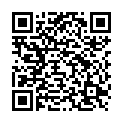|
|
|
| Module code: BBWL-130 |
|
|
4LU (4 hours per week) |
|
5 |
| Semester: 1 |
| Mandatory course: yes |
Language of instruction:
German |
Assessment:
Written exam (60 min. / can be repeated semesterly)
[updated 02.01.2019]
|
BBWL-130 (P420-0162) Business Administration, Bachelor, ASPO 01.10.2012
, semester 1, mandatory course
BBWL-130 (P420-0162) Business Administration, Bachelor, ASPO 01.10.2016
, semester 1, mandatory course
BBWL-2020-130 (P420-0162) Business Administration, Bachelor, ASPO 01.10.2020
, semester 1, mandatory course
|
60 class hours (= 45 clock hours) over a 15-week period.
The total student study time is 150 hours (equivalent to 5 ECTS credits).
There are therefore 105 hours available for class preparation and follow-up work and exam preparation.
|
Recommended prerequisites (modules):
None.
|
Recommended as prerequisite for:
BBWL-350 Data and Business Process Management
BBWL-460 Business Information Systems
BBWL-571/671 Specialization (SP) Module 1: Software Engineering
BBWL-572/672 Specialization (SP) Module 2: IT Management
BBWL-573/673 Specialization (SP) Module 3: IT Consulting
BBWL-574/674 Specialization (SP) Module 4: IT Systems and Architectures
[updated 21.02.2019]
|
Module coordinator:
Prof. Dr. Christian Liebig |
Lecturer: Prof. Dr. Christian Liebig
[updated 01.10.2016]
|
Learning outcomes:
After successfully completing this module, students will be able to:
- position business informatics in the overall context of business administration,
- name and explain basic business informatics terms,
- use the most important techniques in spreadsheet calculation,
- program simple macros in Excel,
- differentiate between when to use spreadsheet calculations and when
to use other applications (e.g. databases),
- use a word processor efficiently
- use a presentation program to create a presentation.
[updated 02.01.2019]
|
Module content:
I. Introduction to Business Informatics
- Business informatics´ place within a company
- Business informatics´ place in computer science
- Goals and tasks of business informatics
- Principles, technologies, methods, application systems
- Current topics in business informatics
II. Spreadsheets
- Introduction and overview
- Formulas, functions, date and time
- Diagrams, processing techniques
- Consolidation and pivot analysis
- Automating with macros: recorder, editor, dialogs
III. Word Processing
- Business letters
- Structuring and formatting large documents
- Tables and graphics
- Quotes and footnotes
- Indices
IV. Presentation Program
- Creating and giving a presentation
- Formatting and layout
- Graphics and other objects
- Creating and reusing templates
[updated 02.01.2019]
|
Teaching methods/Media:
Lecture + independent work on the PC to solve specific business tasks using the appropriate software tool (Microsoft PowerPoint, Word and Excel). E-learning tools will also be used.
[updated 02.01.2019]
|
Recommended or required reading:
I. Introduction to Business Informatics
- Schwarzer, B., Krcmar, H.: Wirtschaftsinformatik, 4. Aufl., Schäffer Poeschel
Verlag, Stuttgart, 2010.
- Fink, A., Schneidereit, G., Voß, S.: Grundlagen der Wirtschaftsinformatik, 2.
Aufl., Physica-Verlag, Heidelberg, 2005
- Laudon K, C; Laudo J.; Schoder, D.: Wirtschaftsinformatik, 2. Aufl., Pearson
Studium, 2010
II. Spreadsheets
- Bossert, T.: PowerPoint für Windows _ Grundlagen, Herdt-Verlag, Bodenheim, latest edition.
- Von Braunschweig, C., Spieß, S., Stulle, K.: Word für Windows _ Grundlagen, Herdt-Verlag, Bodenheim, latest edition.
- Wies, P.: Excel für Windows _ Grundlagen, Herdt-Verlag, Bodenheim, latest edition.
- Wies, P.: Excel für Windows _ Fortgeschrittene Techniken, Herdt-Verlag, latest edition.
- Schiecke, D., Schuster, H., Schwenk, J., Pfeifer E., Microsoft Excel _
Das Handbuch, Microsoft Press Deutschland, Unterschleißheim, latest edition.
[updated 02.01.2019]
|

